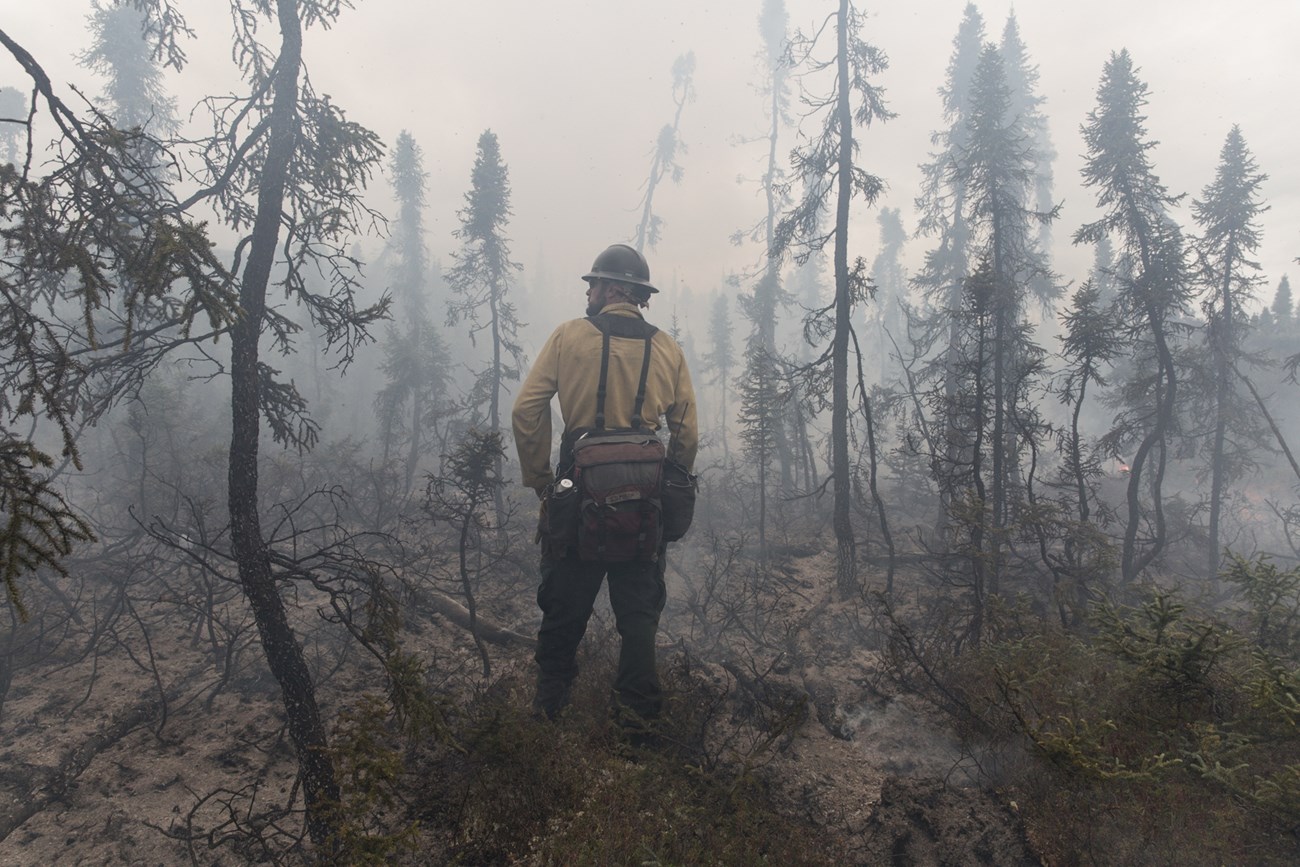
NPS/Y. Matsui Wildfires in Lake Clark? Yes, on occasion and when conditions are right. The park's wildfire season can start in May due to longer, warmer days and typically peaks in June, although a few human-caused fires have occurred in April and September. Fires are infrequent in the eastern two thirds of the park due to glacial extent, the high mountain elevations where little grows that could burn, and the maritime coastal influence of Cook Inlet which produces a rainy climate. However, the western third of the park sits on the edge of the interior boreal forest, also known as the lightning belt; a place where frequent lightning-ignited fires help make ecosystems healthy and have done so for thousands of years. The 2005 Stony Fire was the most recent large-scale fire to burn in this area. It grew to nearly 3,000 acres. Human-caused fires that have the potential to threaten lives and property can occur throughout the park. The majority of these preventable fires are campfires. In 1953, a large fire burned near the town of Port Alsworth. Fire professionals at Lake Clark balance the risks and benefits of fire by committing to safety, science, and stewardship. They reduce the fire risk around park cabins and structures by removing flammable vegetation. Staff monitors the effects of fires. Through shared fire responsibilities with the State of Alaska Division of Forestry, they protect life, property, and significant natural and cultural resources. They also work with communities, local, state, federal, and native organizations to keep people safe and landscapes healthy. Fire History in Alaska's National Parks Zoom and scroll through this interactive map to see where and when fires have burned within Lake Clark and other National Parks in Alaska. To report a wildland fire in Alaska call: 911 or 1-800-237-3633
For More Information
|
Last updated: May 4, 2020
